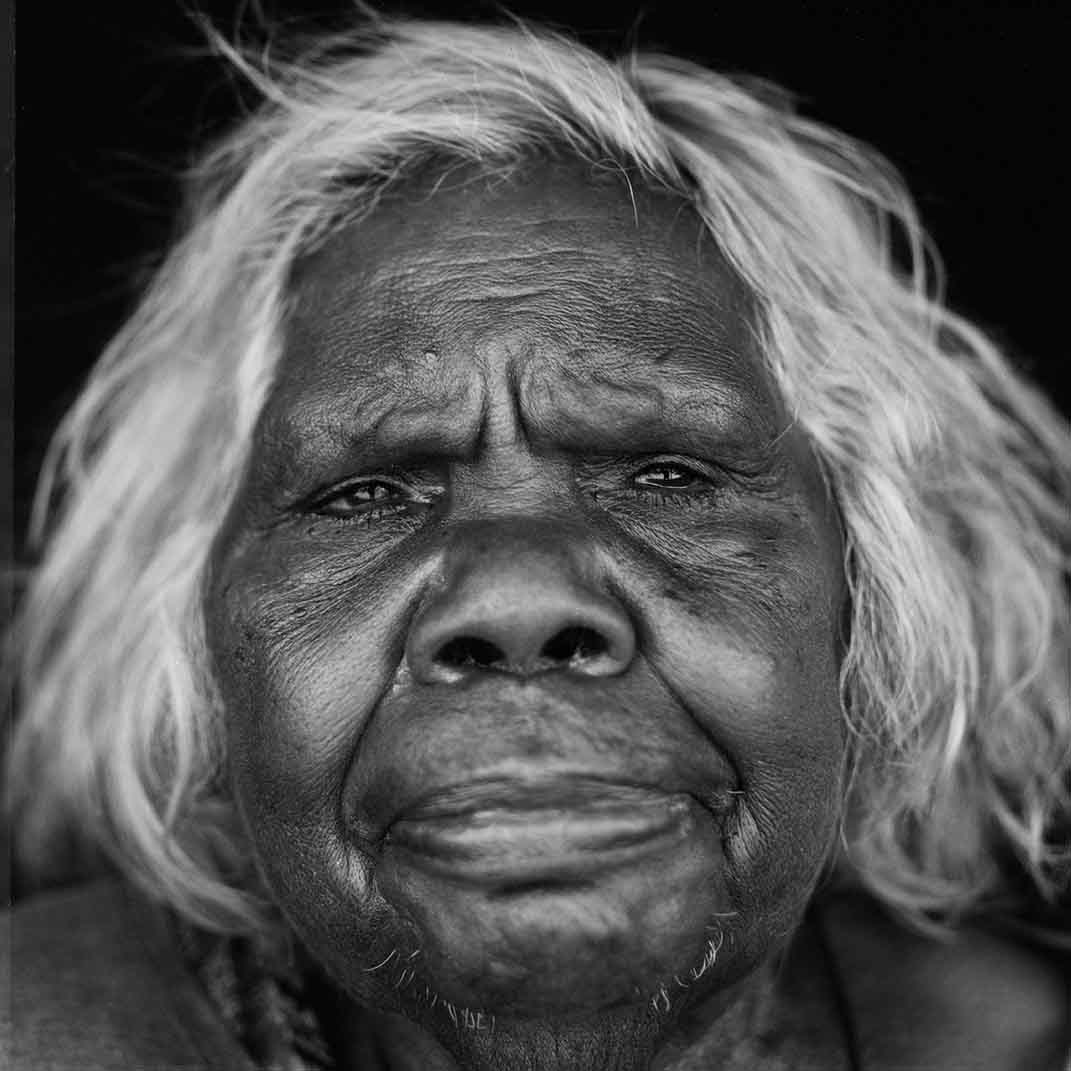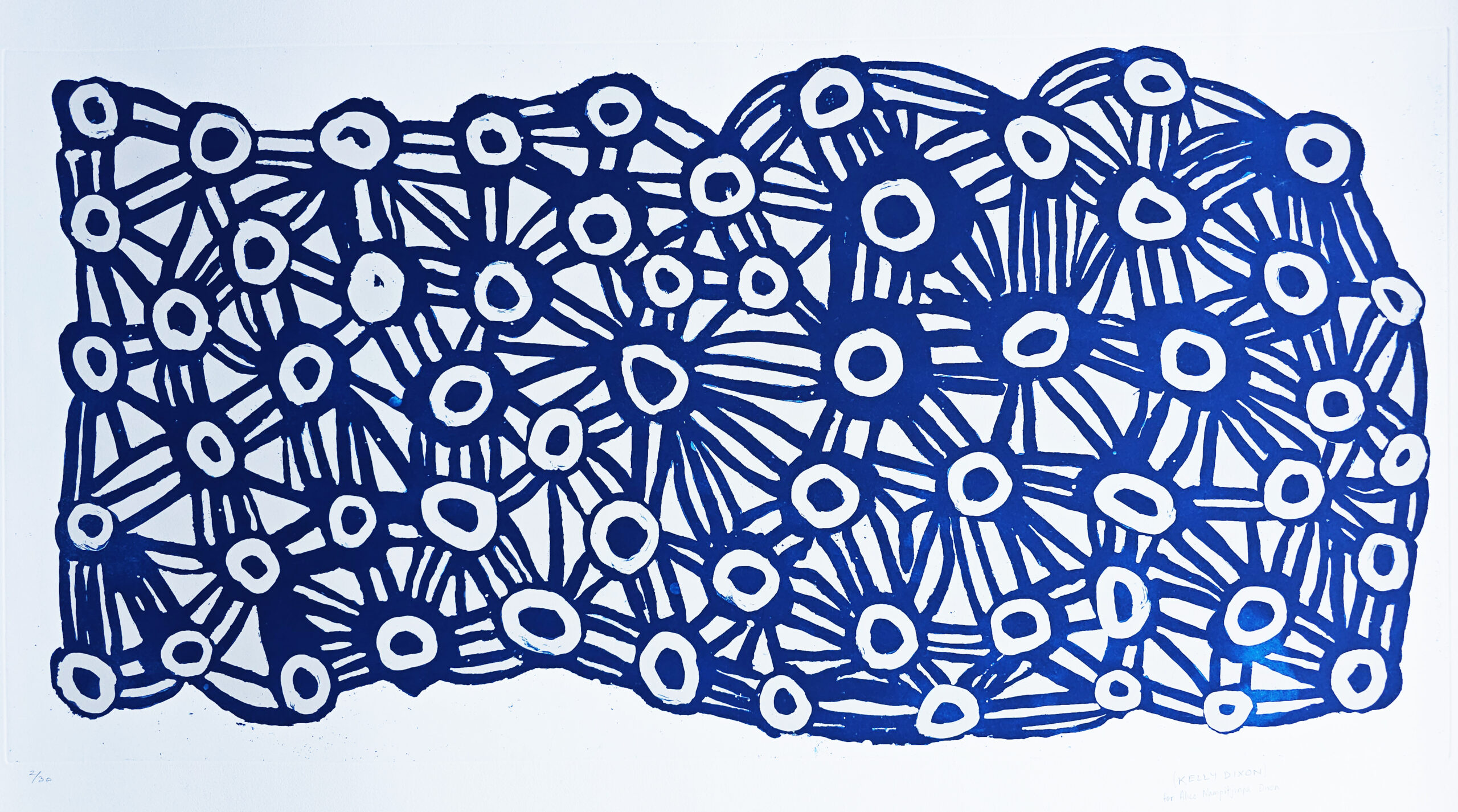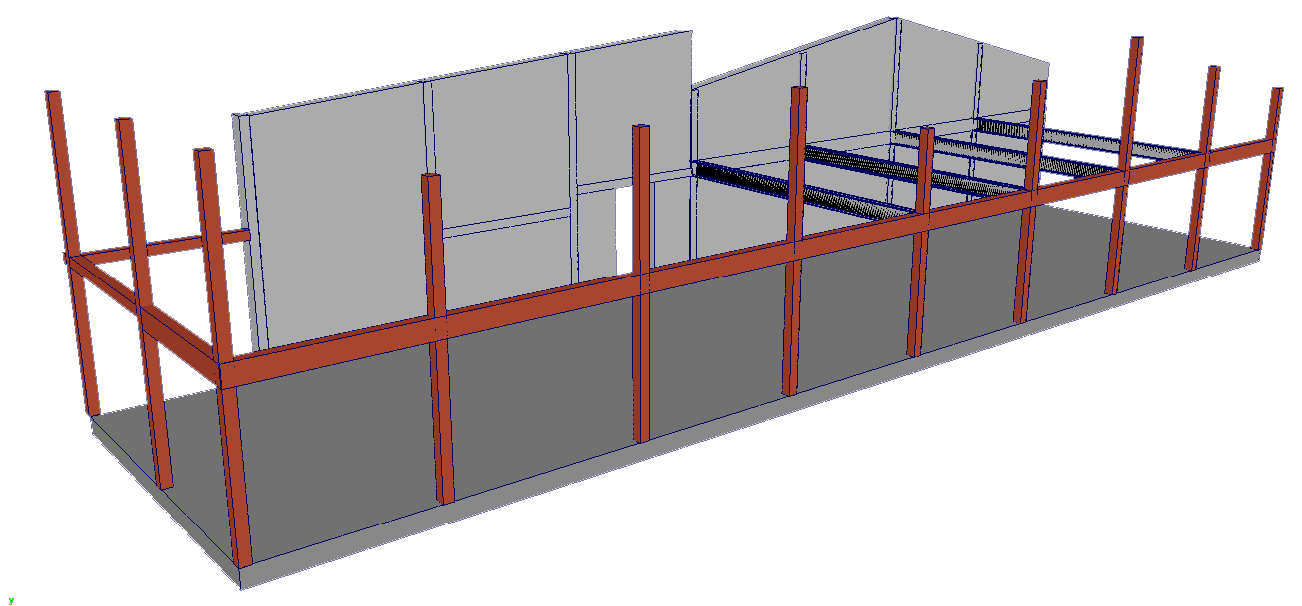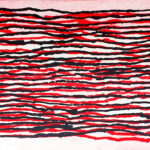Alice Nampitjinpa Dixon
1943-2020, Haasts Bluff, Australia
Alice Dixon was born in the Australian desert, near the border of Western Australia. She began painting in 1994 in Kintore community, before settling in Haast Bluff. From then on, she painted at the Ikuntji Art Centre, depicting the Porcupine Dreaming (Tjilkamala). She also created refined prints, characterized by a keen sense of line and a rather minimalist approach. A respected « Dancing Woman, » she held a central place within her community and regularly participated in « Women’s Law » meetings.
In 2024, four years after her death, she entered the print collections of the Bibliothèque nationale de France.

Collections
Bibliothèque nationale de France, Paris
Aboriginal Art Museum, Utrecht, Netherlands
Art Gallery of New South Wales, Sydney
Heide Museum of Modern Art, Melbourne
National Gallery of Australia, Canberra
National Gallery of Victoria, Melbourne
Parlament House Collection, Canberra
Supreme Court of the Northern Territory, Darwin
University of Queensland, Brisbane
Griffith University, Brisbane
Araluen Art Centre, Alice Springs
Wereldmuseum Rotterdam, Netherlands
Selected Solo Exhibitons :
Tunbridge Gallery, Subiaco, Australia
Suzanne OConnell Gallery, Brisbane
Alcaston Gallery, Melbourne
Gallery Gabrielle Pizzi, Melbourne
Selected Group Exhibitons:
Alice participated in more than 200 exhibtions, including :
2017, 2015, 2013, 2009-2005, 2003, 2000, 1998 Desert Mob, Araluen, Alice Springs, Australia
2014, 2013 SOAF – Seoul Open Art Fair, Seoul, South-Korea
2002 Mythology & Reality, Jerusalem Centre of the Performing Artist, Israel
2000 Aborigena : Arte australiana contemporanea, Palazzo Bricherasio, Turin, Italy.
1997 National Heritage Art Award, Canberra.
1997, 1996 Telstra National Aboriginal and Torres Strait Islander Art Award, Museum and Art Gallery of the Northern Territory, Darwin
1996 Ikuntji Tjuta, Art Gallery of South Australia, Adelaide.
1994 Minyma Tjukurrpa- Haasts Bluff/Kintore Canvas Project, Tandanya National Aboriginal Cultural Institute, Adelaide
- Alice Dixon – Tjilkamala
- Alice Dixon – Tali Tali
Alice Nampitjinpa Dixon
Tjilkamala – Porcupine Rockhole
2022 (posthumous edition)
etching, limited edition of 30
78 x 107 cm paper ; 50 x 100 cm image
Long ago in the Tjukurrpa, a reality in parallel that is both the continuous narrative of the world’s origin and a spiritual time, women followed the Great Ancestor at a safe distance through the desert. From one waterhole to another, they gathered the remnants of his meals to feed their community.
This is where the traditional role of women comes from, who, with their digging sticks, gather plants, insects and small animals. This is also where the songlines emerged, linking the life points of the desert and mapping them out.
From cycle to cycle, the group travels these same paths, drinking and gathering in the footsteps of the Ancestors and generations of men and women who came before them.

Alice Nampitjinpa Dixon
Tali-Tali
2019
etching, limited edition of 20
49 x 98 cm (no margen)
In the languages of the central Australian desert, Tali means sandhills. For miles, these long natural streaks mark the rhythm of the land and the life of people. In a single work, Alice Dixon intertwines
these lines with the imprints left by the ones who have traversed these spaces, shaped by the Great Ancestors. Offering a glimpse of both a place and its experience through the Tjukurrpa, it exceeds its
simplicity of means, bringing forth a pattern that, on its own, captures the viewers’ eye and pulls them into a journey across its surface.
This print, whose lines of strokes evoke the image of cords, contributed to give Tali its name.






